May 14, 2019
Last week, in the first of this two-part series on how to biohack your body for muscle gain and fat loss, I filled you in on some of the top gear and tools I weave into my own exercise routine. That first article focused on the beginner gear, and in this article, I'll move on to the more intermediate and advanced tools and toys that can vastly enhance any exercise protocol.
Let’s now move to more complex or lesser-known pieces of exercise equipment that can be added in to create the ultimate studio or home gym for molding your body.
Admittedly, these are slightly spendier upgrades but will allow you to get even more out of your training.
In a world of “As-Seen-On-TV” exercise contraptions, these are the solutions that – of the hundreds I have tried over the past decades – will give you the best bang for your buck during your workout. Let's do this.
Intermediate Fitness Upgrades

– Keg – In his book “The Encyclopedia of Underground Strength and Conditioning,” my friend and strength training coach Zach Even-Esh includes workouts that feature keg carries, keg lifts, keg tosses, and all manner of exercises using an apparatus you’re probably more accustomed to drinking beer from. Most breweries, bars, and pubs will cut you a fantastic deal on an empty keg, or give you one for free. Simply fill ¼ to ¾ full of water and prepare for one of the best core and full-body workouts you’ll ever experience.

– Tire – In his manual, Zach also teaches tire flips, sledgehammer slams against a tire, tire sled drags, and other brutal workouts that pair perfectly with the keg above and the sandbag below for the ultimate garage, outdoor or backyard workout. If you pull a pick-up truck around to the back of most tire stores, they’ll hook you up with an old, worn tractor tire for free (I recommend you call first to see if they have any available). I own one large tractor tire, a couple of medium size tires, and even a few smaller ones for my kids and wife.
– Sandbag – I made my sandbag in about 30 minutes by purchasing a couple of military duffel bags off Amazon, putting pea gravel into plastic contractor bags, then putting the gravel-filled plastic bags into the duffel bags. Another easier option is to just buy a sandbag from a website such as Rogue Fitness, then fill with sand or small gravel rocks when it arrives. In addition to my homemade version, I own two types of sandbags – a sandbag with handles designed for the same type of exercises you’d do with a barbell, such as cleans or clean and jerks, and a “pancake” style sandbag more similar to what you’d find in a Spartan race, which works for exercises such as deadlifts, farmer’s walks, throws and tosses, situps, and slams.
– Yoga Trapeze – Everyone who comes to my house raises a curious eyebrow when they walk in the front door to see, hanging directly beside the dining room table from the upstairs railing, a bright purple parachute-like device. Those brave enough to actually attempt hanging from or playing with this device immediately want to own one. The trapeze operates on the concept of 1) traction and 2) inversion.
Traction refers to any treatment or technique that pulls or lengthens the spine or other joints apart. Take the spine, for example. A healthy spine has full, firm, and resilient disk tissues that allow for complete range of motion. But after sitting all day in an office or car, exercising and rotating the spine, and years of bad posture, improper footwear, and poorly designed chairs, these disks can bulge, herniate, thin, and become compressed. Your lumbar spine is particularly susceptible, with L4 and L5 being the commonly affected trouble areas that cause radiated pain along the entire spine, as low down as the sacroiliac joint and joints or as high up as the cervical spine and neck.
Inverted positions, such as those that are assumed in yoga or while hanging upside down from gravity boots or an inversion table, not only provide this traction but also alter the blood flow, including lymphatic drainage, flow of cerebrospinal fluid and can increase capillarization to the brain. Inversion is also a fantastic recovery technique, especially for runners and cyclists.
A yoga trapeze allows for simultaneous inversion and traction and is made from the same material as a parachute. The seams are quad-stitched and rock solid, the hooks are pure steel, and there’s no chance that while hanging upside down anything is going to break (unless you happen to weight over 600 pounds). You can hang a trapeze from inside a doorway; or outside from a beam, bar or swing set. It is easy to learn how to use, and I personally hang from mine every day for 2-5 minutes, usually during a quick break from work and to drain my legs after standing at my standing desk for long periods of time. It also works well after you’ve been on a long road trip or period of airline travel.
– Inversion Table – Though I’m now a bigger fan of a yoga trapeze, the inversion table can be even easier to use, especially for anyone who can’t hoist their body up into a yoga trapeze. Teeter makes good inversion tables that also include special “plugs” that allow you to do trigger-point therapy on your low back while hanging.
– Rebounder – A recent study conducted by the American Council on Exercise (ACE), discovered that, when it comes to heart rate and oxygen expenditure, bouncing on a mini-trampoline for less than 20 minutes a day is just as good for you as running, although participants reported that it made them feel better and was a lot more fun than actually running.
In the study, researchers gave a group of 24 participants a mini trampoline workout in the form of a 19-minute trampoline exercise video. They then measured the jumpers’ heart rates and oxygen expenditure each of the 19 minutes.
They specifically found that trampolining is rated as a “moderate-to-vigorous intensity” exercise that produces the same physiological benefits as running six miles per hour, cycling, or playing football, basketball, or ultimate Frisbee. But as I mentioned above, when the participants were actually asked to rate how they felt during the trampoline workout, they reported that the workout felt far easier than it should have based on their cardiovascular response and calorie burn.
This isn’t actually groundbreaking news. In fact, trampoline-based exercise, also known as “rebounding” has quite a colorful history as both a recreational sport and exercise modality. For example, during World War II, trampolines were used to help increase the spatial awareness and balance abilities of pilots. NASA has studied trampoline training for astronauts and found it to be (similar to this latest study) just as effective as running, with no significant differences in maximal heart rate, maximal oxygen uptake or energy expenditure when exercising on a mini-trampoline compared to treadmill running.
For these reasons, I’m a fan of having a trampoline tucked away somewhere in the home or office. You’ll find that when you feel like doing absolutely nothing at all, and definitely don’t feel like exercising, just two minutes of jumping on a trampoline can give you a burst of energy, and it’s a wonderful tool to have on hand for a recovery day too. You don’t just have to “bounce.” You can do jumping jacks, high-knee running, squats, planks and plenty more. The best rebounder models are made by Jumpsport.
– Plyometric Boxes or Bench – Single-leg and double-leg jumping and fast, explosive stepping on a raised surface are efficient ways to create or maintain high-quality muscle fibers and to also boost testosterone. If you’re short on space, simply get a bench that can double as a surface for activities such as chest press or dumbbell rows. If space permits, I recommend a few plyometric boxes of varying heights. Rogue Fitness and Titan Fitness have good models.
– Barbell Rack – A good barbell rack will include an Olympic style weightlifting bar, a pull-up bar, plenty of plates (preferably rubber) and sturdy extensions to rack a lift before and after a set. There are several racks that have a small footprint and will even fold up against the wall to take up less space, such as the PRx Performance, originally featured on Shark Tank.
– Electrical Stimulation Machine (EMS) – I personally own the Compex (good portable solution for full-body training), a MarcPro (good portable solution for recovery, soreness, and injuries) and a NEUBIE (not very portable, but extremely powerful for full-body training). Learn more about EMS in my article, “How To Use Electrical Muscle Stimulation to Enhance Performance, Build Power and VO2 Max.”
– X3Bar – In 2015, my friend and guest on my podcast “The Best 10 Minute A Day Workout – How To Massively Increase Bone Density And Muscle In Just 10 Minutes (& Biohack Extreme Fitness Levels),” Dr. John Jaquish authored a research protocol for a London based hospital to perform a study on human performance and bone. In that study, it was found that individuals could create tremendous forces through the body when exercising using a form of variable resistance, in which a form of training called “isokinetic training” is used to push back against your body just as hard as you push against it. Other studies have shown that this same type of variable resistance training creates muscle gains three times faster than conventional weight training, with double to triple the gains in one-rep max, and triple the gains in average power. Variable resistance has also been shown to produce greater anabolic hormone responses compared to conventional weightlifting and produces a higher increase in serum testosterone and growth hormone than regular weightlifting. While using an elastic-band based prototype of the “X3Bar” invention he designed for isokinetic, variable resistance training, Dr. Jaquish gained 30 pounds of muscle while simultaneously losing body fat.
With an series of elastic bands at varying resistances, a small portable bar that simulates an Olympic weight training bar by using specially machined alloy steel with internal bearings, and a rugged footplate to stabilize the elastic band, the X3 bar replicates the same style of training used in these studies, in a small, portable workout system. It allows you to perform any exercise at over 500 pounds of force, but, due to the bar attachment, without the elastic bands twisting one's ankles or applying excessive torsion to one's wrists. This system can be used for portable training, low-impact training, or heavy weightlifting without the weights.
– Rowing Machine – Research has shown that one of the highest calorie-burning tools in existence is the rowing machine (the others are listed below). When it comes to upper body and lower body utilization, grip strengthening and a low-impact training environment, a water- or fan-based rowing machine can be used for longer cardiovascular endurance workouts or high-intensity intervals. I’ll often use a 500m row to warm-up, cool-down or include throughout a strength training workout to keep my heart rate boosted during the session, and it’s a handy fitness option if you have any ankle, knee or shoulder injuries that restrict your range of motion. I recommend the Concept2 model.
– VersaClimber – While the use of the VersaClimber is a growing fitness trend now adopted by athlete celebrities such as LeBron James and Peyton Manning, the machine itself is actually decades old. The first VersaClimber was built by a mechanical engineer in 1981, but as fitness fads came and went over the years, the VersaClimber was mostly forgotten, until recently as personal trainers and strength coaches have recognized it’s extreme efficiency as a training tool.
The 7-foot tall VersaClimber is a machine that mimics the natural motion of climbing and is comprised of a vertical rail with pedals and handles. To use it, you get into an upright position by inserting your feet into the foot straps on the pedals and grabbing the handles. From there, you can adjust handle height, stroke length, and resistance. Walsh usually has his clients start with the handles at shoulder height. The longer the stroke length and range of motion you cover with each climbing step, the greater the muscle recruitment, making this a cardiovascular version of variable resistance training. A higher resistance setting allows for a more slow-paced, strength-building workout, while minimal resistance makes it more cardio-focused.
Exercising on the VersaClimber requires a motion of “alternating reciprocal movement,” which means when you move one arm up or down, the opposite knee does the same. Performing this motion in an upright position forces your entire body to work at once. Since it's manually-powered, you can control your own pace with your movements, and go as fast or as slow as you want with little impact. Although it’s a “big” machine, it has a relatively small footprint since it can simply be tightly stacked against the wall of a gym or garage.
– Incline Treadmill – Most treadmills at the average gym will allow for a maximum incline of 15%. But an incline treadmill, first introduced to me by famed obstacle course racer Matt Novakovich and his coach Yancy Culp, allows you to set a maximum incline of 40%. This means that you can simulate hiking up just about the steepest mountain you’d ever be able to find, making it a fantastic tool for training uphill without needing to expose your ankles, knees, and hips to the rigors of running back downhill, which can be tough on the joints.
Walking at speed as low as 2.0 mph on an incline of 40% can metabolically feel as though you’re sprinting on a track. If you’re like Matt, you can keep a sandbag, weighted vest or weighted backpack next to the treadmill for an added challenge. I recommend the NordicTrack model, and use it frequently whenever I’m training for a big hike, hunt or mountainous obstacle race.
– TrueForm Treadmill – The TrueForm isn’t a “treadmill” in the traditional sense since there’s no motor. Instead, the belt is driven by your own human power, and curved upwards at either end, so that you accelerate when you’re closer to the front and decelerate when you back up. On a normal treadmill, the motorized belt cuts out some of your workload by assisting your leg turnover and decreasing the ground reaction forces that would normally require the use of more leg musculature. But the only way to walk or run on a TrueForm (code: BEN10 will save you 10%) is to use your legs to power the belt.
As the name implies, the shape of the treadmill forces you to be true to form. Your core must work harder to stabilize your body on an unstable belt, requiring strong, upright posture, a high cadence without an overstriding heel-strike, and a slight forward lean to maintain your center of gravity for forward momentum. The handrails are designed to be lower than the average treadmill, allowing your arms to have more freedom to pump and assist you than on a regular treadmill. This causes you to burn up to 44% more calories compared to walking or running on a manual treadmill.
Currently, I use a modified TrueForm with the front dashboard removed as the treadmill for my standing desk. The lack of a motor means it is low in dirty electricity so I’m not subjected to electrical pollution during a day of work and, unlike other manual treadmills, the speed of the TrueForm allows me to alternate between walking, jogging or sprinting whenever I want, without pushing any buttons.
– Air Assault Bike – An upgraded version of the old school “fan bike” with handles for pumping with the arms and pedals for pumping with the legs, this is a low-impact way to get the heart rate high fast. The newer models have a built-in computer dashboard that allows you to select, say, a Tabata set (or program in any other interval time and recovery time you desire), and the bike will then beep every time you are to switch from 20 seconds hard to 10 seconds easy. My Air Assault is an indispensable tool for maintaining cardiovascular endurance even when my body is too beat up to go for a run or do any type of impact training.
– Standing Desk – Why the heck would I include a desk as a piece of exercise equipment? Frankly, a standing desk, especially one that you can keep a treadmill or bicycle in front of, allows you to engage in an amount of low-level physical activity throughout the day that can make any other workouts you do much shorter (or even optional if your goal is health and not performance!).
Because treadmills and stand-up desk motors can both produce larger amounts of electrical pollution, I recommend you pair a manual treadmill or bicycle that allows you walk or pedal throughout the day with a few sprints thrown in with a manual, hand-crank or non-motorized stand-up desk that allows you to go from seated to standing with just a few quick cranks.
Both Lifespan and Woodway make a good manual treadmill, although I purchased a modified Trueform treadmill with the front dashboard removed, which doubles as a performance training device because it allows me to both walk and sprint during a day of work. For a standup desk, look into models by Varidesk and Focal Upright. For a done-for-you package, Trekdesk makes a treadmill and standing desk combo. Throw in a few challenging surfaces to stand on, such as a TopoMat, a Kybun Mat or a Fluidstance, and you can keep your body in excellent shape during a basic day of desk work.
Advanced Fitness Upgrades (The Guilty Pleasures)
If you like to own nice things and love the concept of better living through science, these fancier, more expensive add-ons will allow you to create the ultimate body upgrading environment.
– Vibration Trainer – In the corner of my living room is a slick, black vibration platform called a PowerPlate, which I occasionally use for moving lymph in the morning (as an alternative to rebounding), for bodyweight workouts and isometric squat and push-up holds, as a pre-workout warmup, and even as a way to induce a morning bowel movement when I need help “moving things along.”
Most vibration platforms are either oscillating or tri-planar. Oscillating platforms have a fulcrum in the center, and the platform rises on one end and lowers on the other. This seesaw motion mimics the motion of walking. Tri-planar platforms rise up and down in a continuous motion, imitating the motion of performing tiny jumps over and over again. Tri-planar platforms have a smaller range of motion than oscillating platforms, operate at higher speeds, and tend to be pricier because they are larger and heavier, but also more effective at vibrating the entire body rapidly.
A vibration trainer’s intensity varies depending on the frequency of vibration, which is measured by the number of oscillations per second expressed in Hertz (Hz). Most research regarding whole body vibration training has used frequencies between 25 to 40Hz, so look for a model that can operate at least within this range (most good tri-planar vibration trainers have a frequency between 15 to 60Hz, while cheaper models operate within a limited frequency range, such as 15 to 30Hz or 30 to 50Hz. I recommend the PowerPlate, which is a tri-planar platform with a wide frequency range, as the best option.
– Vasper – I talk about this fancy training device that can be used just three times per week for 21 minutes as a form of high-intensity cardio training in the podcast, “How To Get 2 Hours Of Exercise In Just 20 Minutes.” The Vasper includes features such as ice sleeves that are wrapped around all your appendages prior to and during training, grounded pads on the pedals that your bare feet are placed on to get an earthing/grounding effect, and pressurized cuffs to increase blood pressure in arms and legs (similar to Kaatsu training), all in a full-body “elliptical style” workout mode.
Compression on the arm and leg muscles while exercising at a low intensity has been scientifically shown to create the physiological effect of high-intensity exercise, even if your intensity isn’t quite as high, and also safely compress the muscle to quickly build up lactic acid, mimicking the physiology of an intense workout that would typically require more extensive time and effort. This high lactic-acid buildup triggers a systemic recovery response, including the natural release of anabolic hormones such as growth hormone and testosterone.
As your body temperature increases while training, blood vessels near the surface of the skin dilate, increasing blood flow to the skin, but leaving less blood and oxygen available for the muscles. When there is not enough blood to remove lactic acid from the muscles, physiological fatigue begins to set in. Remaining cool during exercise allows blood oxygen levels to remain high throughout the body, which makes exercising even at higher intensities much more efficient and pleasant. The icy cold water that circulates through the Vasper’s compression sleeves allows for this cooling effect to occur during the exercise session.
Each Vasper protocol that is already built into the software that accompanies the device is a 21-minute interval training session, delivered on a tablet that is fully integrated with the recumbent bicycle-sized machine. Each section of the interval training protocol is customizable in duration, intensity, resistance, and speed, and the pressure and cooling can also be modified for ability, comfort level, and performance. There are even heart rate monitors with graphs of power output displayed on the screens to track performance. As you can imagine, the price point on the Vasper isn’t cheap (around $45K all in), but for busy folks, including well-known health, longevity, business, fitness gurus, research institutions and pro teams like Tony Robbins, Peter Diamandis, San Jose Sharks, Texas Rangers, NASA, Stanford Sports Medicine, and UCSF, this is the ultimate solution to interval training with science. You can find a Vasper system in your area (usually you can buy a package or monthly membership for use) by clicking here.
– ARX – The ARX is a mashup of single set to failure training and superslow training that can be used for extreme strength training or for rehab. In a similar manner that Vasper “biohacks” cardiovascular interval training, ARX technology “biohacks” strength training with a computer-controlled, motorized resistance that is capable of matching any force you produce, giving you a perfect rep with every rep.
Unlike a traditional weight training machine that requires you to adjust the weight with pins or plates, there is no need to set the resistance while using ARX. Instead, the machine applies opposing resistance in direct proportion to what you are producing at each moment in time throughout an entire rep. The entire effort for that one single set to failure is then measured and displayed by the software in real time.
The ARX OMNI allows for over a dozen motions, including the squat, deadlift, pulldown, row, overhead press and chest press, while the smaller ALPHA allows for leg press, chest press, row, calf raise, and torso extension and flexion.
Using the ARX (use code: BEN for $500 off shipping and installation) works for any of the super-slow workouts you discover throughout this book, but amplifies their benefits to an entirely new level, especially from an eccentric training standpoint. Similar to the Vasper, this is one of the spendier devices in this section, but can be leased for home or commercial use for as little as $350/month and can be used as little as once per week with significant strength, bone-density and muscle-building results.
– PeakFitPro – Because muscle must be overloaded with adequate time under tension, preferably to failure, for a significant adaptive response to occur, anything short of forcing your muscle to work as hard or harder than your previous workout rarely results in an increase in size or strength. In fact, anything less is usually just proof that you are not yet recovered from your last workout, which is why I define workout recovery as the ability to meet or exceed what you were able to do in your last workout. If you don't show up stronger than your previous workout, then what is the point of the new workout? This, along with the ability to produce enormous amounts of force without much joint wear-and-tear, is why isometric exercises done at a maximal intensity can produce significant gains.
Isometric training simply involves pushing against an immovable object while producing large amounts of force, without your joints actually moving. The best example would be to go to a sturdy wall in your house and use your arms to try to push through it. This should feel like the hardest pushup you’ve ever attempted in your life because the wall simply won’t move.
The PeakFitPro – which I did a full podcast on here – is a static contraction, isometric training machine that allows for up to 5,000 pounds of force (like lifting almost two Toyota Corollas) to be produced during exercises like the squat, deadlift, chest press, pull-down, overhead press, or over thirty additional exercises, along with a Bluetooth-enabled connection to a phone app to show you if you truly have met or exceeded what you were able to perform in a previous workout. With traditional weightlifting, if you do a set of 10 repetitions before you reach “failure,” the first nine reps are practically just a warm-up for the last rep where the real muscle stimulation happens. And those first nine reps can potentially make you weaker for the tenth. With an isometric training machine like this, you can do that last rep first. With the PeakFitPro, you simply do one rep of 5-10 second all-out effort, creating an immediate and significant muscle-adaptation response. Each exercise is performed at the strongest part of your range of motion, creating maximum stimulation. This position is also the position that is safest for the muscle and joint, thus markedly reducing the chances of injury.
Because this machine is motionless, it’s safer than most other exercise machine or free weight devices – nothing to break or fall or snap or drop. Because you’re in the “strong zone” of your range, it’s safer for your body, and there are no clanging weights, spinning wheels, fans or other noisemakers. If you’ve seen videos of me on the internet struggling against what appears to be an immovable bar attached to a force plate, then I was likely on the PeakFitPro (use code GREENFIELD for $200 off) in my basement. This, like many of the other devices in this section, is spendy at $6495.
– LiveO2 – The LiveO2 sits in my office next to a stationary bike and allows me to complete my twice weekly EWOT (Exercise With Oxygen Therapy) session in just fifteen minutes by simply stepping away from my desk for a quick pedaling session. EWOT is a method of breathing higher levels of oxygen during exercise in order to increase the amount of oxygen in your blood plasma.
Exercise with oxygen was originally pioneered in the 1960s by a German researcher named Dr. Manfred Von Ardenne. He wrote a book called “Oxygen Multistep Therapy” which is, by far, an extremely thorough reference on oxygen therapy should you want to take a deeper dive.
In the book, Ardenne describes how stress triggers inflammation – and how inflammation subsequently compromises health. He described how plasma hypoxia triggers inflammation in the endothelial tissues, which then sets up restriction to blood flow in capillaries.
But, more importantly, he developed a method to quickly and durably fix this problem of hypoxia, specifically an elevation in plasma, (the fluid which carries red blood cells), oxygen levels to lower capillary inflammation, and restore circulation.
A substantial body of research has since demonstrated that the administration of oxygen while exercising promotes an expansion of constricted capillaries that then enhances blood perfusion of congested capillary beds. The squamous cells making up the endothelium of capillaries tend to swell when deprived of oxygen, creating a vicious cycle, as this swelling prevents further oxygenation.
Exercise in the presence of high amounts of oxygen (EWOT) opens the arterioles, and the oxygenated blood can then reduce any swelling in the capillary endothelium. This allows the entrance of more oxygenated blood, which creates a positive cycle of lower inflammation and better oxygenation. Repeated administration of EWOT can lead to a lasting reduction of endothelial swelling and an increase in peripheral circulation. Indications for use include exercise performance conditioning, inspiratory muscle strengthening, amelioration of asthma, acceleration of wound healing, enhanced immune system function, decreased incidence of migraines, increased mitochondrial density, and a host of other positive benefits.
By using a system like the LiveO2, you can actually upgrade the effects of EWOT by, with the flip of a switch during your exercise session, alternating back and forth between hypoxia and hyperoxia (this is called adaptive contrast). Most EWOT systems take at least one 9-hour workout to deliver therapeutic oxygenation, but with adaptive contrast, you can deliver oxygen flow rates that meet or exceed the researched levels required and reach a therapeutic result in just 15 minutes (standard methods of EWOT become therapeutically effective at 9 hours according to the research of Dr. Ardenne). With adaptive contrast, it is as if you are switching back and forth from sea level to high mountain elevations of 10,000 feet instantly during exercise. These switches make your heart and lungs work harder, so the oxygen does a lot more. I’ve personally found the results to be enhanced with any blood dilating or blood building supplement, particularly beetroot, cordyceps, echinacea, beta-alanine, and niacin. You can also see a full workout video I did on LiveO2 here.
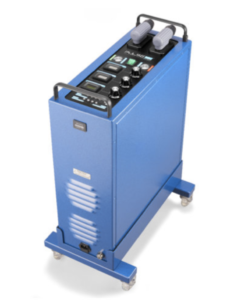
– PulseCenters PEMF Table – In many of my previous podcasts and articles (linked below), you learn most of what you need to know about PEMF, which you can think of as a form of “exercise for your cells.” I am actually writing this very article while seated on a rocking chair version of the PulseCenters XL Pro unit. There is no better way to deliver high-intensity PEMF to your entire body all at once. Originally used by the horse racing industry, they are now available to consumers. Here are the top podcasts and articles I've produced on PEMF and why to use it:
- The Most Powerful Cellular Exercise Machine That Exists, How It Works & Exactly How To Use It.
- The Myth About “Grounding”, Acupuncture Without Needles, 400% Increase In Stem Cell Production & Much More.
- The Potent Ergogenic Effects of Pulsed Electromagnetic Field Therapy to Enhance Athletic Performance
- A Tiny, 1/2 Ounce Piece Of Game-Changing Sleep Technology (And How To Use PEMF For Sleep)
– Infrared Sauna – An infrared sauna is a type of sauna that uses light to create heat. These saunas are sometimes also called far-infrared saunas, and the “far” simply describes where the infrared waves fall on the light spectrum. In contrast, a traditional dry sauna uses heat from rocks or other heating elements to warm the air, which in turn warms your body. So a dry sauna must rely only on indirect means of heat: first, convection (air currents) and then, conduction (direct contact of hot air with the skin) to produce its heating effect.
But because an infrared sauna instead relies upon light, it can heat your body directly without significantly warming the air around you, and the light waves from the infrared sauna penetrate deep (2-6 inches) into your body for a heating effect that allows more activation of your sweat glands compared to dry sauna. So an infrared sauna doesn't feel as hot as a dry sauna, but you sweat as much or more. Interestingly, these lower temperatures can stimulate a significantly higher sweat rate, which can eliminate toxins stored in fat through the skin.
The far-infrared rays you are exposed to in an infrared sauna consist of similar wavelengths that are emitted naturally by the human body (yes, your body emits its own light radiation). This is one potential explanation of why many people feel so energetically rejuvenated and balanced from contact with far-infrared waves in an infrared sauna compared to feeling a bit more drained and dehydrated after a dry sauna experience. Tests have shown that the energy output in an infrared sauna is tuned so closely to your body’s own infrared radiation that you absorb as much as 93% of the far-infrared waves that reach your skin.
To generate both heat and invisible light, far-infrared saunas typically use either a carbon or ceramic heater, which do not turn red hot like the heating elements inside a conventional dry sauna but instead produce invisible, far-infrared heat. This is the same type of heat as produced by the sun but without any of the effects of solar radiation. For years, many folks in the alternative health community have sworn by using infrared heat lamps as a source of far-infrared heat, but these lamps can be cumbersome, they can get extremely hot to the touch, and they can be difficult to maintain at a constant temperature compared to an infrared sauna.
So basically, an infrared sauna is like having a tiny little temperature-controlled sunshine inside an enclosed room, without the UV radiation.
In an infrared sauna, only 20 percent of the energy from the light is used to heat the air, leaving the rest of the energy to heat the body. The temperature inside a typical infrared sauna is adjustable and averages about 100°F to 140°F, depending on how long you warm the sauna up before getting in, and what you put the temperature setting at.
Several studies have investigated the use infrared saunas in the treatment of chronic health problems, such as high blood pressure, congestive heart failure and rheumatoid arthritis, and these studies have indeed found some evidence of benefit. For athletes using a sauna post-exercise for thirty minutes, the blood-building benefits can extend to being as powerful as illegal performance-enhancing drugs such as EPO.
No adverse effects have ever been reported with infrared saunas, and until I recently began using an infrared sauna, I’d already been using infrared therapy with a heating mat called a “Biomat” for the past two years. But even though a Biomat offers you a relaxing, warm surface to curl-up on for something like a soothing afternoon nap, it doesn’t hold a candle to an infrared sauna.
Finally, you must choose your sauna carefully. Unfortunately, for most people, it's not the slightly lower levels of heat that tend to be the problem with an infrared sauna. Instead, it's the fact that most infrared saunas are concentrated hothouses chock full of Electromagnetic Fields (EMF), basically turning what is supposed to be a detoxification and longevity-enhancing experience into the equivalent of hanging out in a microwave or perched inside a giant WiFi router, leaving you with cell damage, brain fog, and inflammation after your sauna session.
So for my own personal infrared sauna, I chose a model that has a type of heater called a True Wave II, which contains a carbon-based infrared heater with virtually no EMF. It’s made by a company called “Clearlight” using a manufacturing process that allows them to cancel out EMF to levels that are nearly undetectable. All the heaters inside a Clearlight sauna are tested to ensure low and safe levels of EMF, which is uncommon in the sauna industry.
Since I like to move around, exercise, do Bikram yoga and even occasionally drag an exercise bike or a kettlebell into my sauna, the Clearlight model I chose is the Sanctuary Y model which is a combination of a personal hot yoga room and an infrared sauna. You can leave in the two 35-inch benches and have a state-of-the-art full spectrum infrared sauna for lounging and reading, or you can remove the benches and have your own private hot yoga room with a built-in heated yoga mat floor. Even though the EMF levels are extremely low, the True Wave Full Spectrum heater system in the Clearlight delivers over twenty times the power of any other infrared sauna. For more on saunas, the importance of minimizing EMF, and how I biohacked my sauna for more heat, check out the following articles:
- Ten Scientifically Proven Reasons I Am Addicted To A Daily Sauna.
- Three Ways To Biohack A Sauna For More Heat, A Better Detox & Enhanced Fitness.
- How *Not* To Microwave Yourself In A Sauna, Cooking Turkeys With Infrared Rays, Low EMF Saunas, Heat Detox Protocols & More!
-Endless Pool – In my ultimate DIY article on cold thermogenesis, you learned about the endless pool that I use for a combination of cold thermogenesis and what I can best describe as upriver swimming. I own a nineteen-foot long model made by Aqua Fitness that includes attachments for low-impact running, elastic-band training and a host of other rehabilitation and recovery exercises, all in the pool. The company Endless Pool makes similar options. Be sure to forego the chlorine and use a natural mineral-based pool cleaning solution. Learn more about that in my “How To Detox Your Home” article.
Summary
So let’s say you’re overwhelmed with the list you’ve discovered in these two articles, but you still want to build the ultimate home gym that incorporates a few key biohacks or upgraded pieces of exercise technology.
In other words, you want the minimal effective dose and the 80/20 of everything you’ve just discovered.
The below list is a perfect example of what an ultimate biohacker’s gym or home health space would look like from as simple a standpoint as possible. If you were to walk into my home gym basement, you would find a setup similar to this:
- Yoga mat
- Bench
- Foam roller and massage ball
- Kettlebells
- A couple heavy sets of dumbbells
- Weighted vest
- Resistance band or X3 bar (use code: BEN for $50 discount on the X3)
- Hex Bar
- Squat Rack With Pull-Up Bar
- Stability Ball
- Medicine Ball
- Battle rope
- Air Assault Bike (or a Versaclimber, or a Rowing Machine, or a Trueform Treadmill (use code: BEN10 for a discount), or if budget permits, all four)
- Electrical muscle stimulator (optional) (use code: BEN for a 10% discount)
- Vibration platform (optional)
- Large infrared sauna (optional)
When you wander out into my garage and backyard, you’ll find the icing on the cake: a keg half filled with water, a large tire for flipping, and a pile of sandbags. With this setup, you can do just about any workout on the face of the planet and will have enough strength and cardiovascular training exercise variety to last a lifetime. Finally, should you not want to break the budget, rest assured that you can find many of these items on Craigslist.
The fact is, by blending ancestral living with modern technology, you cannot only make exercising and molding the body that you desire incredibly fun, but you can also engage in better living through science that allows you to shortcut your way clean and fast using everything that modern science has taught us about efficient exercise. You now know how to design the ultimate combination of both simple and complex fitness tools to biohack the body and to keep your body fit in a post-industrial era of airline travel, long car trips, and sedentary office-based lifestyles.
Do you have questions, thoughts or feedback for me any of these tools or toys, or your own to add? Leave your comments below and I will reply!




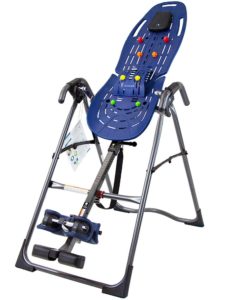
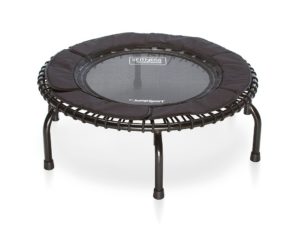
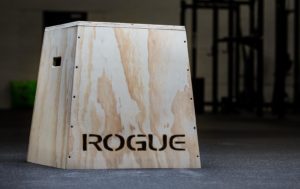
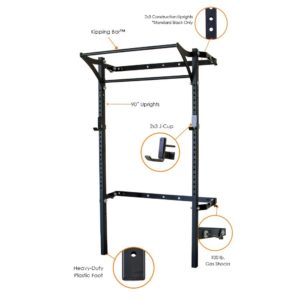
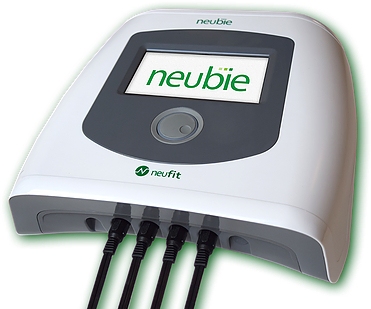

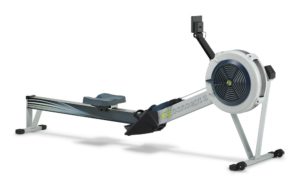
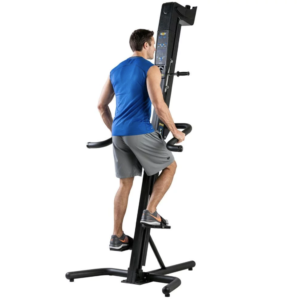
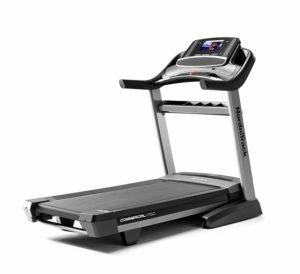

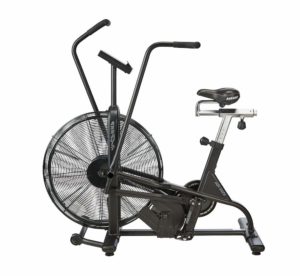
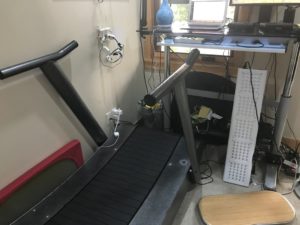
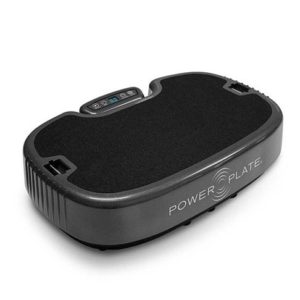
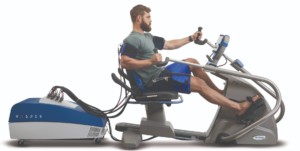

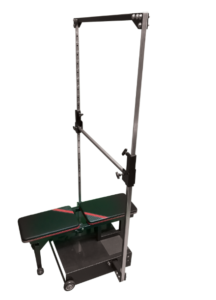
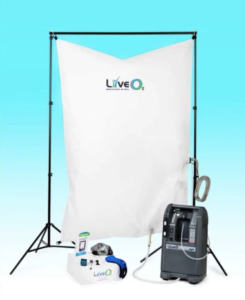














I have the opportunity to get either a Concept 2 rower or a Proform 905 cst treadmill. If you didn’t own either a rower or treadmill yet, and you could only get one of the two (and it has to be those brands–it’s an anniversary gift from work), which ones would you choose?
Whichever one you'll get the most use out of! I'd probably go with the rower though.
Excellent article as usual! Based on your recommendation, I got the X3 a few months ago, and love it. Based on Dr. Mercola’s recommendation, I also perform the Nitric Oxcide Release (as adapted from Dr. Zach Bush). How would you combine these two protocols in any given week?
By the way, I plan to see you in Charleston, SC on May 29! How do I learn more about the agenda for that night? I would like to bring a friend or two. Thanks!
Zach Bush's protocol is more like something you could do during a Pomodoro break at work, while the full X3 bar workout could be performed every other day for strength training. Re: agenda for Charleston, contact Craig Koniver's clinic! See you there!